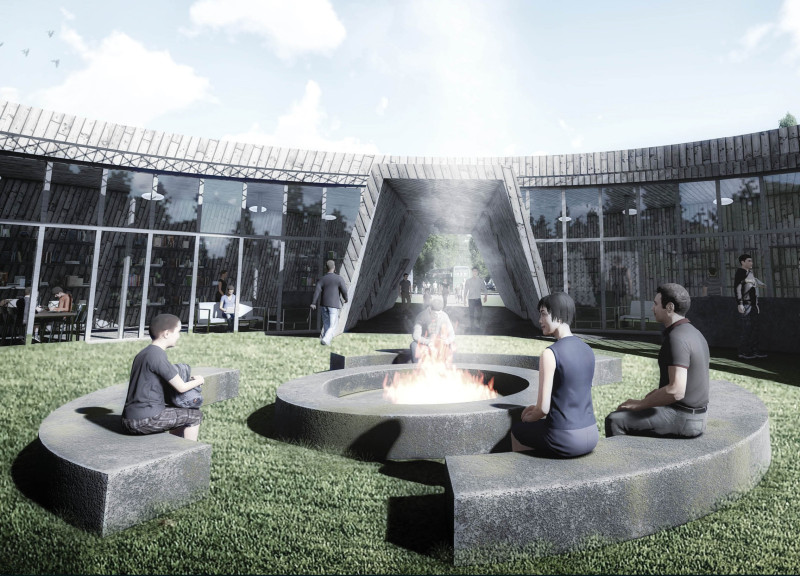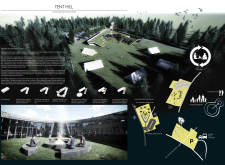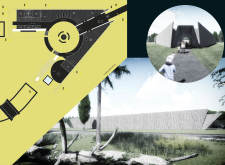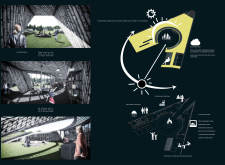5 key facts about this project
The project consists of a main structure and adjoining outdoor spaces that accommodate gatherings, educational programs, and recreational activities. The layout is strategically designed to enhance the flow of movement from entry to the surrounding pathways, ensuring easy access to both indoor and outdoor features. Key spaces within the visitor center include the welcome area, flexible exhibition spaces, and an outdoor hearth designed for communal activities.
Sustainability is a focal point of the design, underscoring the significance of ecological integration. The use of materials such as reinforced concrete for structural support, various finishes of wood for aesthetic warmth, expansive glass for views and natural light, and steel elements for durability exemplifies a commitment to functionality and sustainability. The design maximizes the connection to nature, with a green roof that blends the building into the landscape, allowing for ecological benefits and recreational areas atop the structure.
The unique approach of Tent Hill lies in its commitment to creating a sense of place through communal spaces that enhance social interaction. The design incorporates various gathering areas strategically placed to encourage visitors to engage with each other and the environment. The outdoor hearth serves as a symbol of unity and warmth, reflecting the traditional role of a communal gathering point. Furthermore, the architectural design adeptly manages light and shadow, resulting in a dynamic space that adapts to different times of the day throughout the seasons.
In summary, Tent Hill exemplifies a thoughtful architectural response to the needs of a community while respecting and enhancing the natural environment. Its design signifies an effort to create an inclusive space that bridges the gap between built and natural environments. For those interested in further technical analysis, reviewing the architectural plans, sections, and detailed designs of Tent Hill will provide additional insights into its design strategies and functionality.


























